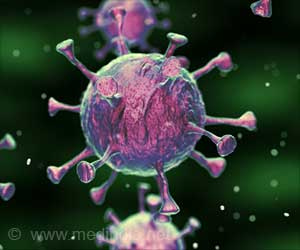
A recent study has found that elevated levels of bioactive lipids, naturally produced in the body, can influence excitatory transmission between brain cells and contribute to the development of mental disorders. However, this imbalance can be corrected with a treatment that inhibits the activation of these lipids in the brain. The study, titled ‘Altered cortical synaptic lipid signaling leads to intermediate phenotypes of mental disorders,’ has been published in Molecular Psychiatry and may pave the way for new treatment options for mental illnesses (1✔ ✔Trusted Source
Lipids in Psychiatric Disorders: Functional and Potential Diagnostic Role as Blood Biomarkers
).
Role of Lipid Signaling Enzymes in Mental Disorders
The teams led by Johannes Vogt (MD) at the Department of Molecular and Translational Neurosciences at the University of Cologne, Robert Nitsch (MD, PhD) at the Institute of Translational Neuroscience at the University of Münster and partners at other universities investigated the role of the enzyme autotaxin and its opponent, the protein PRG-1, in regulating the balance between excitation and inhibition in the brains of humans and mice. The research was carried out within the framework of Collaborative Research Centre 1451 ‘Key Mechanisms of Motor Control in Health and Disease’ (speaker: Professor Dr Gereon Fink, University of Cologne).
The project under the leadership of Vogt and Nitsch within the CRC deals with the balance between excitation and inhibition in the brain and its effect on motor function. This balance plays an important role in mental disorders. In the case of excitation, neural circuits cause information to be passed on and other neurons to be activated; in the case of inhibition, this information transfer is interrupted.
The project groups in Cologne and Münster had already shown in previous studies that the body’s own lipids in the brain are activated by the enzyme autotaxin and stimulate nerve cell activity at the central checkpoint of signal transmission, the cortical synapse. As a result, they alter information processing in the brain’s networks.
Functional Consequences of Altered Synaptic Lipid Signaling in Mental Disorders
In the current study, the researchers analyzed the functional consequences of altered signal balance in 25 individuals induced by the antagonist of autotaxin, which reduces the activated lipids at the synapse. Using various methods for measuring brain waves and brain activity as well as psychological tests, they found specific changes that also occur in patients, so-called intermediate phenotypes of mental disorders. This means, for example, that comparable patterns of brain activation can be found in both patients and their clinically healthy relatives.
Additional studies in the mouse model revealed that animals with a similar genetic disorder showed comparable symptoms: increased anxiety, a depressive phenotype and lower stress resilience. Synchronization and information transfer between brain areas was similarly altered in humans and mice. “The study indicates that the regulation of excitation and inhibition by synaptic lipid signals plays a crucial role in the development of mental disorders,” said Professor Vogt.
Autotaxin is the key enzyme of lipid activation in the brains of mice and humans. The increased excitation state of the networks caused by the genetic disorder could be restored by administering specific inhibitors of autotaxin. According to the researchers, these findings open up new perspectives for the diagnosis and treatment of such disorders. “Targeted modulation of synaptic lipid signals using autotaxin inhibitors that can reach the brain could open up possibilities to treat mental disorders,” concluded Professor Nitsch. In future studies, the researchers plan to further investigate these approaches and to test their effectiveness and safety in clinical trials.
Advertisement
Reference:
- Lipids in Psychiatric Disorders: Functional and Potential Diagnostic Role as Blood Biomarkers
– (https://www.ncbi.nlm.nih.gov/pmc/articles/PMC10890164/)
Source-Eurekalert



